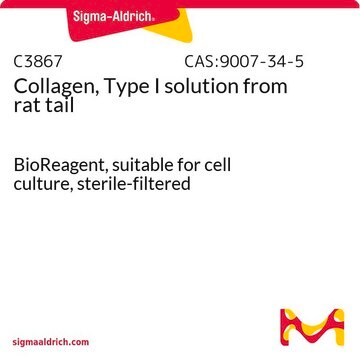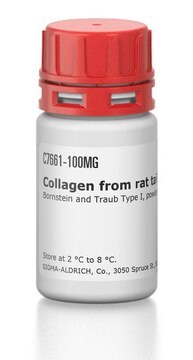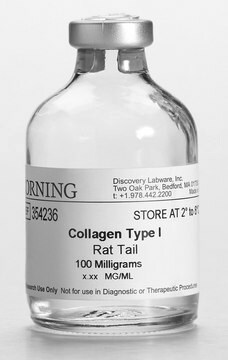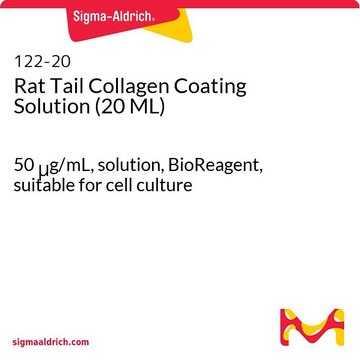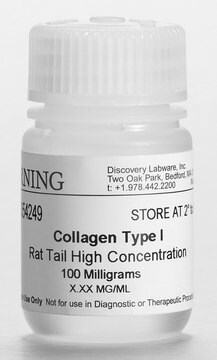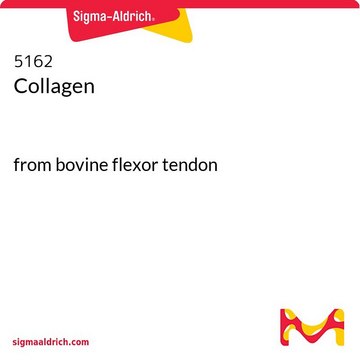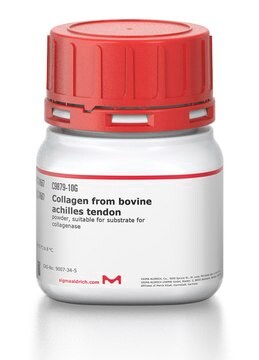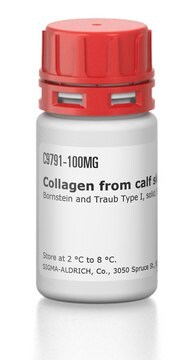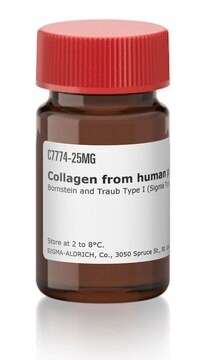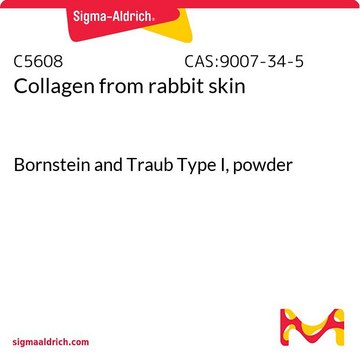11179179001
Roche
Collagen
from rat tail tendon
Synonym(s):
collagen
About This Item
Recommended Products
biological source
rat tail
Quality Level
sterility
sterile
form
lyophilized (clear, colorless solution after reconstitution)
packaging
pkg of 30 mg
manufacturer/tradename
Roche
technique(s)
cell culture | mammalian: suitable
UniProt accession no.
storage temp.
2-8°C
Gene Information
rat ... Col1a1(29393)
General description
Specificity
Application
Biochem/physiol Actions
Features and Benefits
Lyophilizate, cell culture grade, 3 vials of 10mg
Specifications
Preparation Note
5 μg/cm2 for the coating of cell culture vessels; for the preparation of collagen gels, a final concentration of 2 to 3 mg/ml is used.
Reconstitution
For the preparation of collagen gels, the content of the bottle should be dissolved in 3.3 ml sterile 0.2% acetic acid (v/v) each. This results in a final concentration of 3 mg/ml.
For coating culture dishes the final concentration should be 1 to 2 mg/ml.
Note: For dissolving: do not stir, just pour the acetic acid onto the lyophilizate and allow it to stand for several hours until it has dissolved. To completely dissolve the product an incubation for up to a maximum of 24 hours at 15 to 25 °C may be required.
Reconstitution of the Collagen should be done at 15 to 25 °C, higher temperatures destroy the fibres and may prevent the subsequent gelation of the Collagen.
Other Notes
Storage Class Code
11 - Combustible Solids
WGK
WGK 1
Flash Point(F)
does not flash
Flash Point(C)
does not flash
Choose from one of the most recent versions:
Already Own This Product?
Find documentation for the products that you have recently purchased in the Document Library.
Customers Also Viewed
Articles
The extracellular matrix (ECM) is secreted by cells and surrounds them in tissues.
3D cell culture overview. Learn about 2D vs 3D cell culture, advantages of 3D cell culture, and techniques available to develop 3D cell models
Extracellular matrix proteins such as laminin, collagen, and fibronectin can be used as cell attachment substrates in cell culture.
Our team of scientists has experience in all areas of research including Life Science, Material Science, Chemical Synthesis, Chromatography, Analytical and many others.
Contact Technical Service